Top Photo: Male common whitetail.
Common whitetails are everywhere. Ponds, lakes, even slow moving rivers and streams are home to this ubiquitous skimmer. The standout white/blue abdomen and dark marks on the wings lend to the easy recognizability of the male. The female too, is easily recognized by the three dark markings on each of her four wings. They both tend to perch low to, or directly on, the ground.
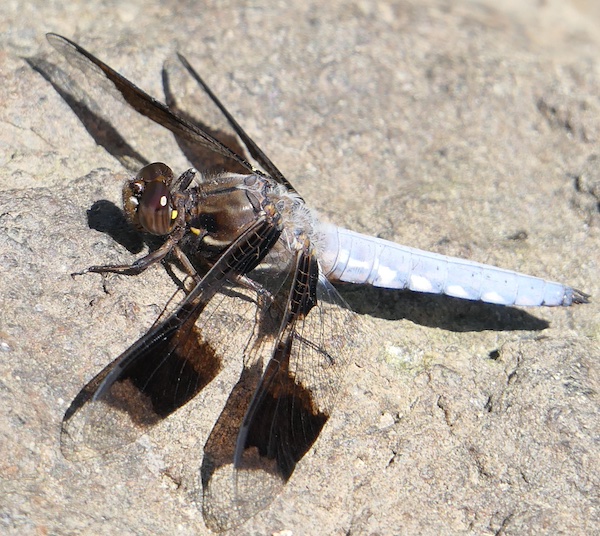
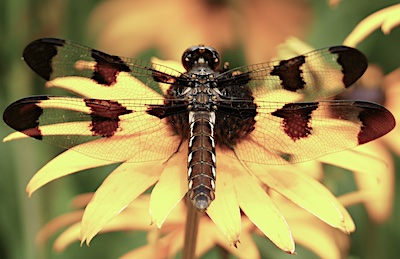
Another early season dragonfly making an appearance is the blue corporal. Unlike the common whitetail which is active throughout most of the spring and summer, even into fall, the blue corporal is a springtime only odonate. The female is brown where the male is blue.
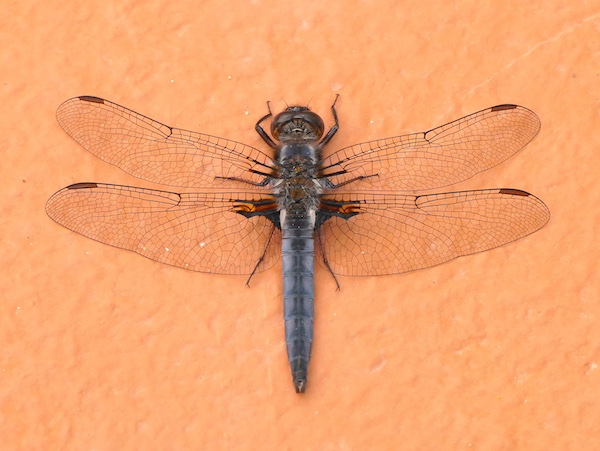
Black locust is in bloom. This leguminous tree’s durable wood is used for posts and ties and other applications where a strong hardwearing wood is needed.
The live tree is prone to attack by locust borers, bright yellow and black beetles. The beetle larvae bore into the tree’s wood during spring and summer emerging as adults in late summer and fall. Look for them on goldenrod.
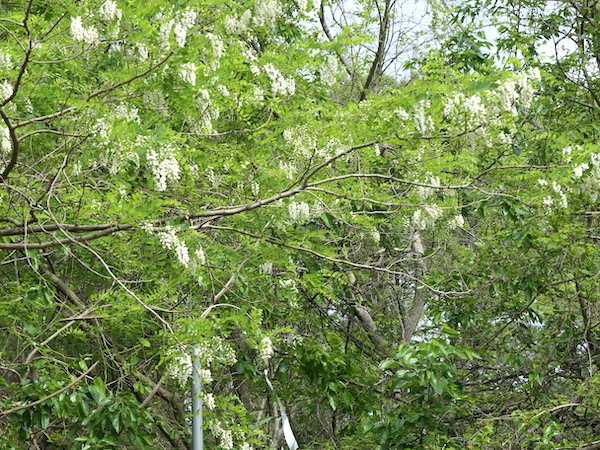
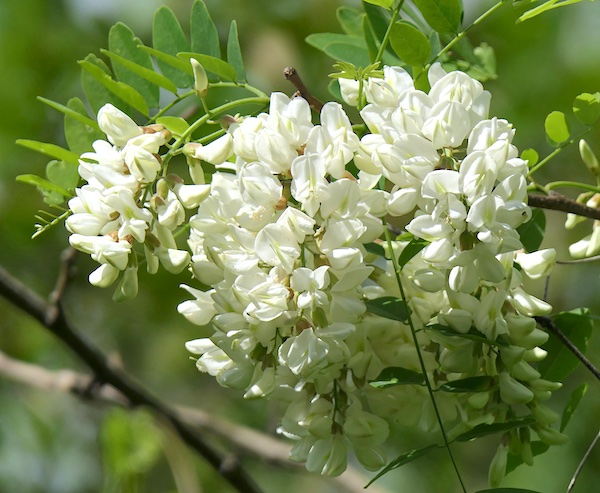
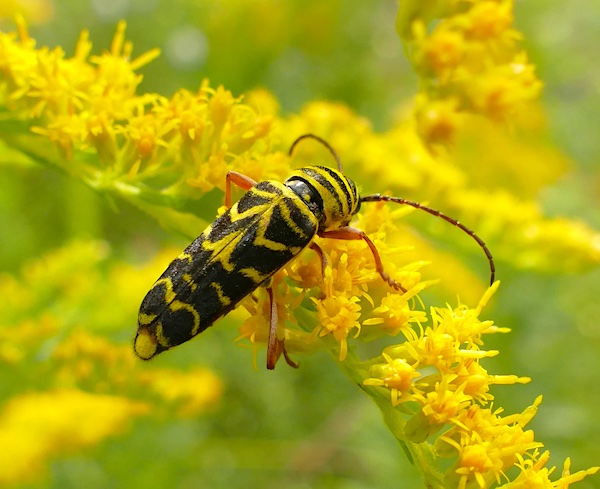
A rather small understory species, the fringe tree, or old man’s beard is also in bloom. The stringy white flowers give the tree both of its best known common names. It’s an unassuming tree rarely noticed except when it’s blooming, after which it “disappears” into the background of the forest.
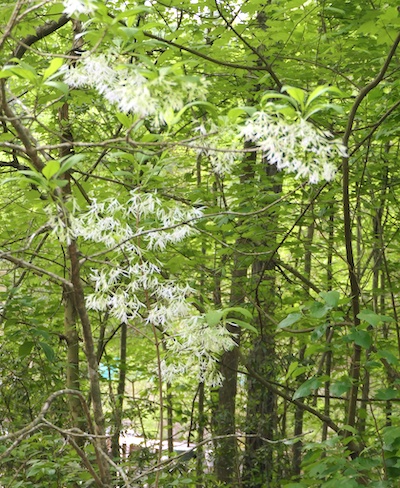
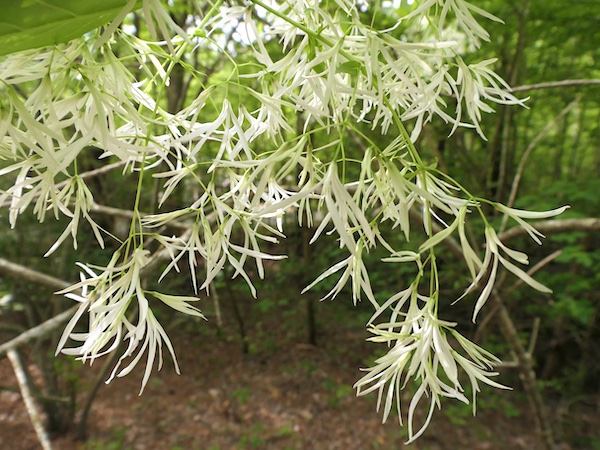
Another tree in showy bloom at this time is a non-native invasive known as princess tree, empress tree, or royal paulownia, among other names. It’s native to Central China but has been naturalized here from New York into Georgia. It resembles catalpa, but its large flowers are purple rather than white. Its wood is of some value in the making of paper, veneer, small utensils and furniture.

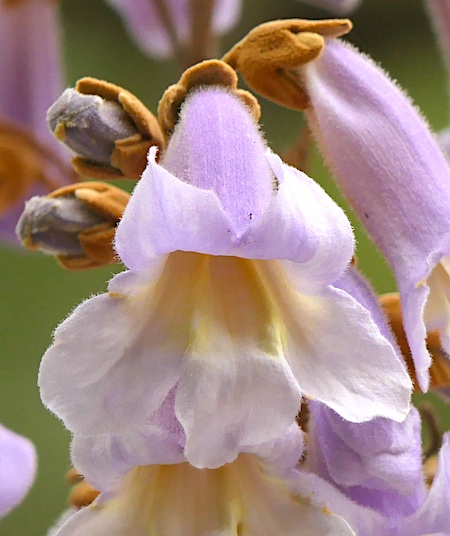
Just ending their springtime activities are thousands of eastern tent caterpillars. Climbing down out of their cherry tree “tents” to crawl off and seek pupation sites. They won’t be seen again till next spring just as the cherry trees begin to sprout leaves.
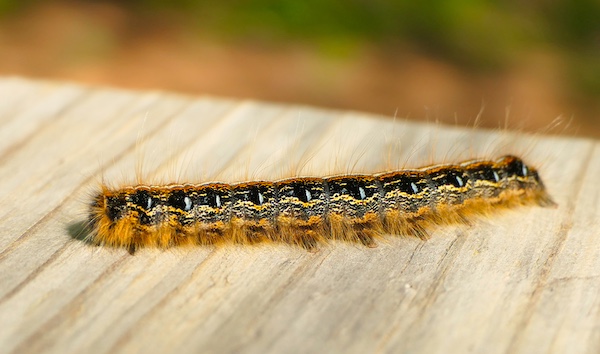
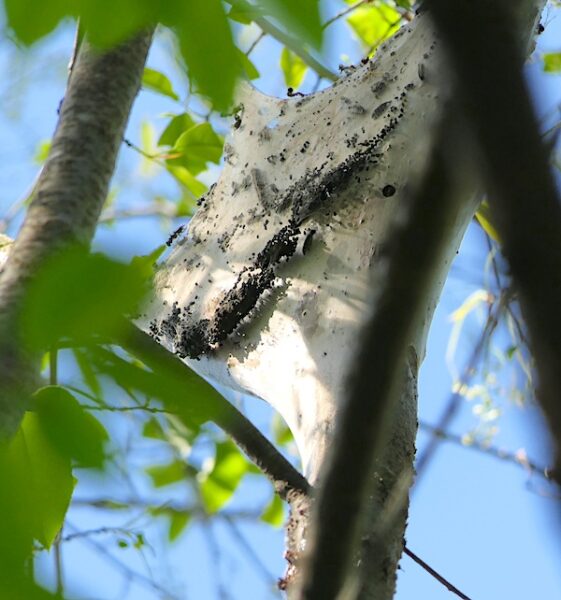
Though we see them year round, spring stimulates more movement in our population of DeKay’s, or northern, brown snakes. They’re a small harmless snake that puts up a good bluff if disturbed as it crosses the path in front of you.
They max-out at about 18” in length—small, thin, and harmless.
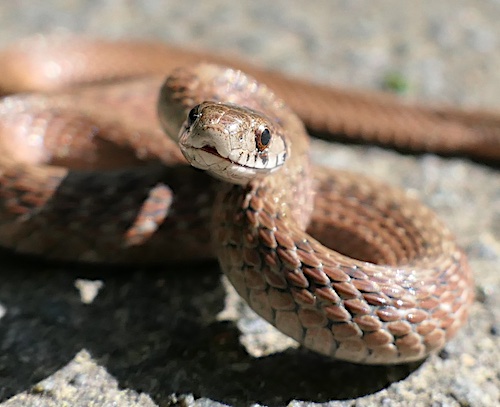
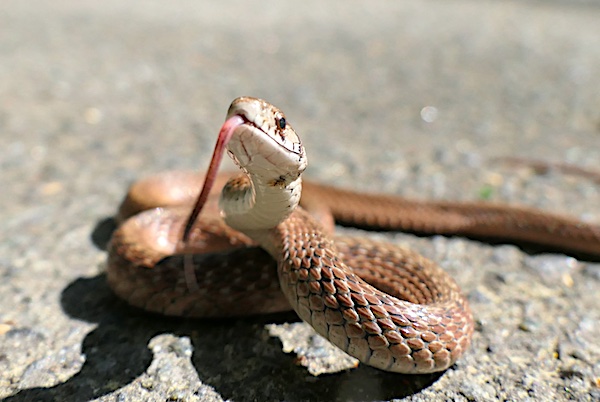
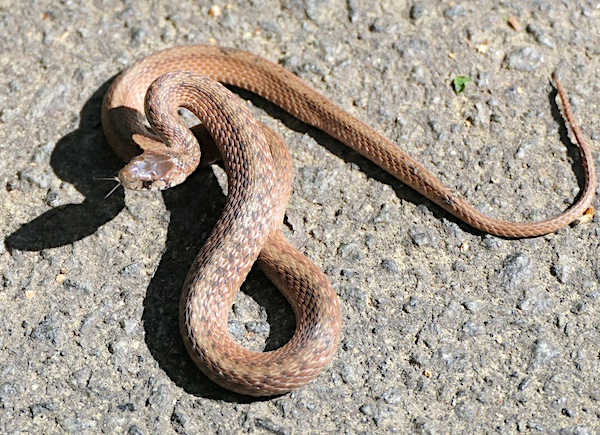
Cedar waxwings, the neat and clean passerine with nomadic tendencies, have been spotted on campus, at least during one morning this past week. The well coiffed species fly across the countryside in both large and small groups in search of fruit bearing tees and shrubs only changing that strategy during breeding. They have, though, been recorded breeding in loose colonial gatherings.
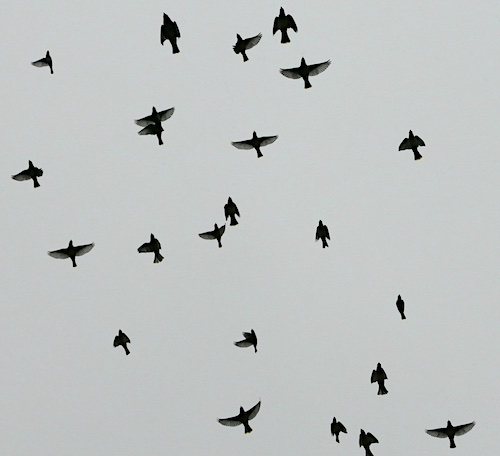
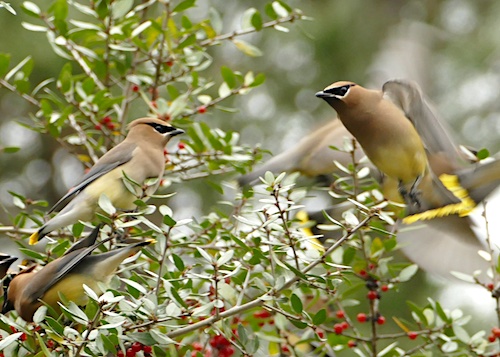
The local gray catbirds and great-crested flycatchers are back. I heard a wood thrush the other day. No hermit thrush or ruby-crowned kinglets in the past few days, they’ve departed for points north.
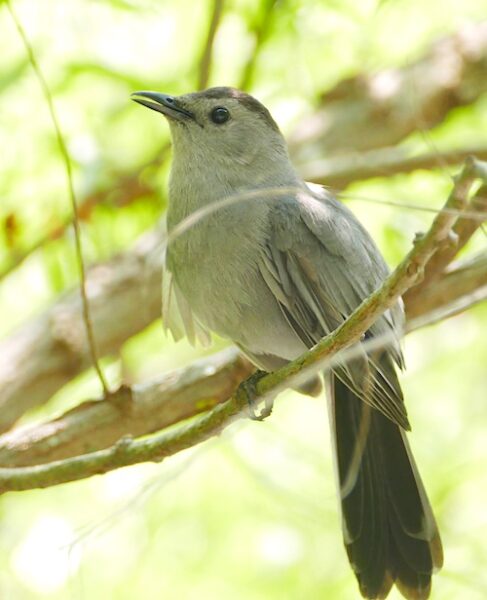
This male green anole (below) displays his dew lap for all to see. Is this a warning to other male anoles, an attractant to female anoles, or both?

Keep an eye on our female red wolf…
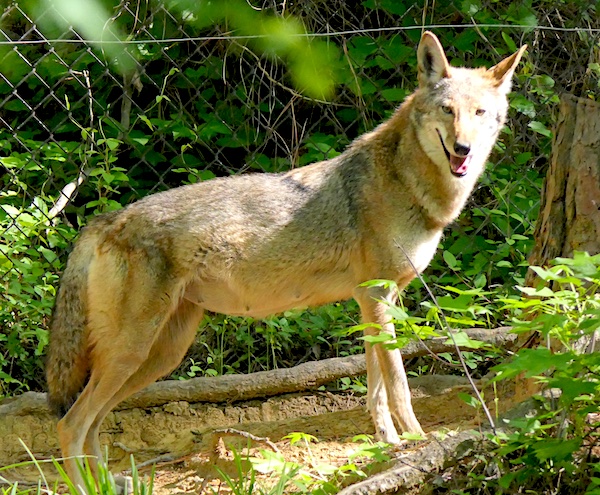
notice anything different?